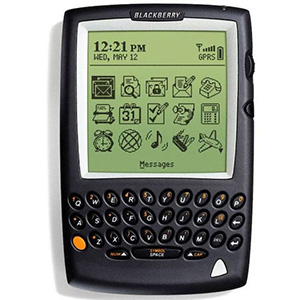Time and Film
By Taylor Spill
Timekeeping has always played a key role throughout history, from the Babylonians and Egyptians keeping track of the solar year to the alarms that wake us up for work. The passage of time can be portrayed in a variety of unique ways. For example, through books, paintings, and film. Timekeeping and cinema can work together in harmony, as a way to visually indicate the passage of time or to portray plot twists and turns, to hint at wardrobe, settings, and locations. Read more about it in Time and Film
Time has been recognized as a measurement unit for over 5,000 years. The first people to document time were the Babylonians and Egyptians, by using calendars influenced by the solar day, the lunar month, and the solar year. Timekeeping soon became an important universal measurement over the decades, centuries, and even millenniums. It was forever something timeless.
So how did time and film meet? The love affair begins around the time of the American Industrial Revolution, during the turn of the 19th century. One of the most important evolutions of the time, the American Railroad system was met with the need for precise timekeeping. The solution for this was the development of the Hamilton Railroad Pocket Watch, by the Hamilton Watch Company in 1892.
Although pocket watches have existed for centuries before, the Railroad Pocket Watch was unique in that it was created to cater to the needs of the American Railroad system. Capturing hours, minutes, and seconds, this precision can be attributed to why this Railroad System found success across America during the time of the Industrial Revolution.
It can be said that Hamilton Railroad Pocket Watch was the first chapter in the company’s timekeeping story. When we think about the story of this watch, it is reminiscent of the bridge between comedic theatre and early cinema occurring around a similar time. The Hamilton Railroad Pocket Watch is a bridge between the past of the pocket watch and the pocket watch adapted for industrial change.
Comedy has existed for centuries as well, from the works of Euripides in Ancient Greece to the works of Shakespeare during the Elizabethan era, it was timeless. However, the invention of the first video camera, the Kinetograph, by William Dickson in 1891, would change the world of comedy forever. Because of the camera, comedy was able to evolve into the genre that it is today.
What do we get when we adapt the Hamilton Pocket Watch and the comedy to fit into modern times? We get The Producers (2005). At first, it was a film written by Mel Brooks in 1967, and then adapted into a Broadway musical in 2001, and then eventually the 2005 remake.
The story set in 1959 follows two men, Max, and Leo, trying to escape the financial burden after the production of a purposeful flop musical, which ended up becoming a success. They realize that the IRS (tax inspectors) does not investigate musical failures, so they construct a plan to fund a flopping musical and embezzle the funds for themselves.
The comedic aspect is the downfall of their plan as well as the consequences they will later face as their produced musical ends up doing well.
This movie perfectly incorporates the theatrical and cinematic elements of comedy. The musical addition to this movie is like what we would see on stage, while the camera is able to capture these moments in a more realistic light. This adaptation of The Producers would not be complete without its accomplice, the Hamilton Pocket Watch.
Just like the history of the comedy, the Hamilton Railroad Pocket Watch was able to withhold the passage of time. It had since evolved from its roots as a form of industrial timekeeping into an accessory that adapted itself into many different forms. The usage of the pocket watch in The Producers connects the bridge between the old and the new, industrial and the modern, connecting time and film.
And now, in 2022, the Hamilton Watch company recognizes the importance of its roots as an industrial timekeeping firm. The new edition of the Hamilton Railroad Pocket Watch is limited to 917 pieces, as a homage to their firm established in 1892 on 917 Columbia Road in Lancaster, Pennsylvania.
This rendition has similar features to the original Railroad Pocket watch such as dials to indicate the passage of hours, minutes, and seconds and a stainless-steel case. It also boasts modern touches such as the use of sapphire crystal and an anti-reflective coating. Overall, it is just like the 2005 edition of The Producers as it maintained what worked, while also adapting to modern times and technology, and both are timeless.
The second chapter for the Hamilton Watch Company came in the form of the Hamilton Ventura watch. Invented in 1957 by the firm, it was the world’s first electric watch. It was seen as the “watch of tomorrow”, incorporating the precision of timekeeping and the adaptation to technological innovations.
The Ventura closely mirrors the science-fiction (sci-fi) genre in the world of film. Screenwriters and directors took classic stories and plotlines and incorporated them with the use of technology in film, and sci-fi was born. Sci-fi was the genre of the future, often meant to represent what society might look like in later times through the lens of the present day.
The first sci-fi film, A Trip to the Moon (1902) by Méliès used a variety of techniques, through filming and staging to represent what he believed the future might hold (in this case, astronomers taking trips to explore the moon). Although this film may look more like a theatrical production, this was the starting point for sci-fi; perfected, and redesigned over time.
The Ventura is symbolic of the evolution of timekeeping, honouring its roots while also using modern technology. It was the first electronic watch. In its evolutionary journey, Hamilton Ventura found itself playing a role in Spiderman: Homecoming (2017).
The Spiderman series itself is nothing new. Spiderman got his start in Marvel Comics around 1962. There have since been a variety of film adaptations of the Spiderman universe, most recently a series of movies starring Tom Holland.
Spiderman: Homecoming followed some of the aspects of Spiderman, however, it is a modern adaptation. The use of CGI, green-screen effects, and more help us to understand the heroes’ journey and world. It also is curated to bridge the gap between the present day and the innovations of the future.
An important part of this movie is the fact that Iron Man, another hero in the Marvel Universe, is the mentor of Spiderman. He oversees the Avengers (the Marvel Universe’s heroes) and the building in which Spiderman is trained is full of technological innovation.
Unsurprisingly, Iron Man is the wearer of the Hamilton Ventura in this film. Both the watch and the movie are symbolic of our vision of the “future”. The “future” is something that can be envisioned and captured through technological innovation in the present moment.
The mystique and appeal of the “present” futures are being recreated in the Hamilton Ventura XXL Bright. This adaptation takes the original electric-powered movement and its iconic triangular-like base shape. In addition, it illuminates into a bright red at a push of the 9 o’clock button.
This watch honours the unique qualities of the original Ventura watch as well as adds the modern touches of neon-red illumination. It was something innovative in its 1957 release, and its 2022 version still has the mystic charm of the futuristic present. The interest in conveying the future in the present remains timeless.
The third and final notable chapter in the story of Hamilton Watches is the Hamilton Khaki Pilot Pioneer Mechanical Chronograph. Developed around the 1970s for the British Royal Airforce, this watch was created to help aid pilots in speed and navigation calculations. It was the watch to be had for those treacherous journeys in the sky.
The Hamilton Khaki would find its place in the action-adventure genre of film. Action movies are always packed with stunts. Whether it is somebody dodging bullets from a helicopter or jumping out of a moving car, there is always some form of calculated motion. These stunts are what add to the already adrenaline-pumping storylines of action films.
The action genre first got its start around the 20s-30s. However, the James Bond films released around the 60s-70s helped set a precedent for what action films look like, even in the present day. The action film is intense, captivating, and stimulating. The lives of the protagonists are always on the line, and they must go to extremes to save themselves.
Since its development in the 1970s, the Hamilton Khaki evolved into different forms and soon became a watch that enthusiasts of military innovation enjoyed as well. It had evolved beyond being the watch of the British Royal Airforce. In its adapted form, the Hamilton Khaki made an appearance in American Assassin (2017)
This film follows Mitch Rapp, an ordinary man turned CIA agent, who encounters a terrorist attack on holiday in Ibiza, killing his fiancée. He becomes invested in counterterrorism, trains himself to fight, and is recruited by the CIA black ops unit. This movie follows the vengeance he takes for the death of his fiancée, and is full of the essential stunts, such as, throwing nukes, controlling boats, etc.
The Hamilton Khaki is worn in American Assassin by Stan Hurley, the former Navy Seal who trains Rapp to become a CIA agent. Precision and navigational calculations are just as important in timekeeping in the open water, which is probably something that Hurley encountered in his time as a Navy Seal.
The Hamilton Khaki Pilot Pioneer Mechanical Chronograph had come a long way from its targeted use for pilots. Now, in the present day, enjoyers of action films, war history, or even those into precise timekeeping can unite over the new version of the Khaki Pilot Pioneer Mechanical Chronograph. It unites both time and film.
The horizontal subdials against one large dial as well as the white lacquer-coated hands remain in this classic watch, while a 60-hour power reserve, as well as newer anti-reflective coating, are an addition. This new addition to the Hamilton Khaki collection is reminiscent of the action-packed journeys of the British Royal Airforce as well as stunts portrayed on the big screen.
Overall, the Hamilton Railroad Pocket Watch, the Hamilton Ventura XXL Bright, and the Hamilton Khaki Pilot Pioneer Mechanical Chronograph represent the unity of the changes in the world of technology with the changes throughout the world of film. Both time and film are interconnected and these adaptations of movies as well as watches past honour the past, the present, and the future to come.
Hamilton is also releasing the Hamilton Ventura L Quartz 14K Gold for the 130th Anniversary of the firm. This watch honours the innovation of the original Ventura model but in solid gold. This rendition is set to be released in November 2022
In addition, Hamilton is also releasing the Black and Gold Capsule Collection featuring the Jazzmaster Automatic, Jazzmaster Auto Chrono, the Pan Europe, Ventura Chrono Quartz, and the Ventura S. These classics are all being remastered, coated in black with contrasting gold accents. This rendition is set to be released in November 2022.
To check out the latest Hamilton Railroad Pocket Watch click HERE
To check out the latest Hamilton Ventura XXL Bright click HERE
To check out the latest Hamilton Ventura L Quartz 14K Gold click HERE
To check out the latest Hamilton Khaki Pilot Pioneer Mechanical Chronograph click HERE
To check out other brand new Black and Gold Hamilton watches click HERE
If you are interested in film and want to explore more, check out the 30th Raindance Festival HERE or go to www.raindance.org
If you enjoyed Time and Film, why not read Time Travel













